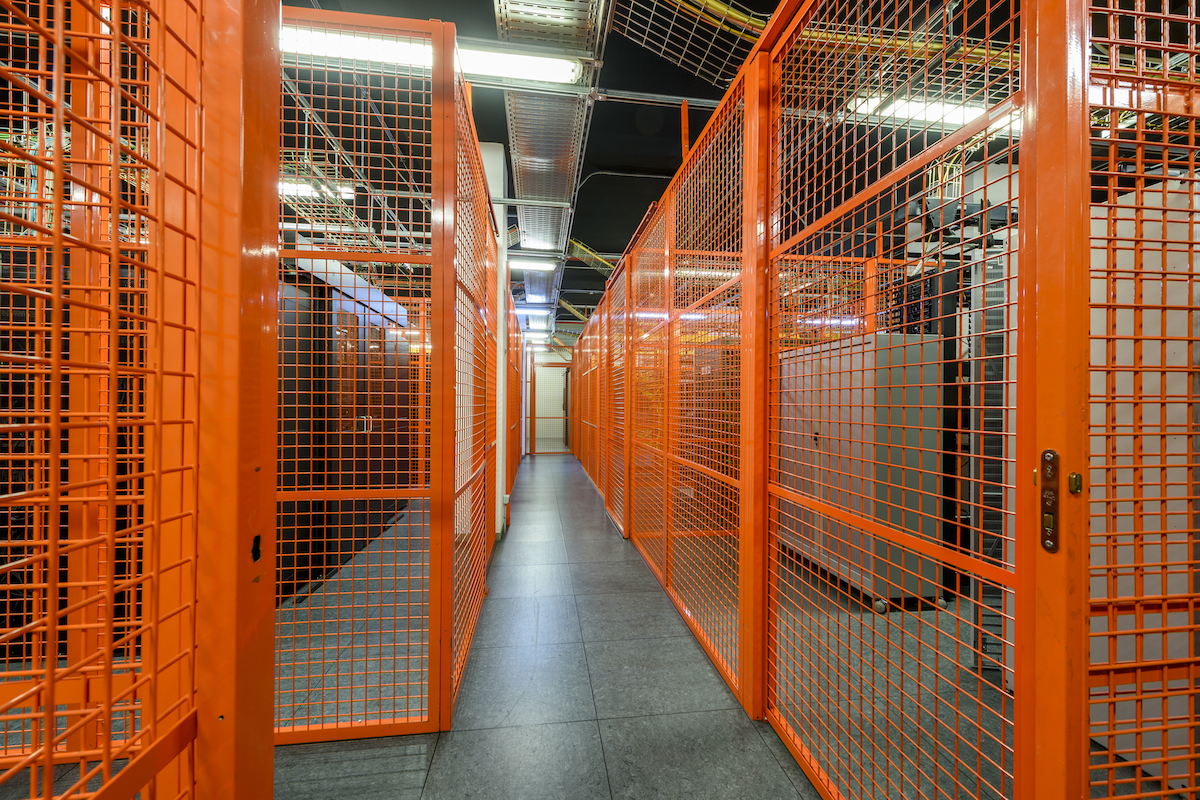The Importance of Mutual Understanding Between IT and Facilities – Part 6: Specifying Cages that Are Compatible with Containment14 min read

Cages and containment don’t have to be mutually exclusive.
If the cage is not compatible with containment, there will be a need for extra volume airflow and lower cooling unit set points, resulting in higher operating costs.
Customer/client cages in colocation data centers have historically resulted in sub-optimized airflow management, but this result isn’t as necessary as most practitioners seem to believe. The basic elements of airflow management can be accomplished in cages, such as use of filler panels in unused rack spaces and floor grommets for any floor tile openings outside of cold aisles. However, the big-ticket tactic, as illustrated in the earlier discussion on network switches, is some form of air containment or separation, whether that be hot aisle containment, cold aisle containment or cabinet containment in the form of cabinet chimneys or vertical exhaust ducts; this level of airflow management has traditionally been precluded by the use of cages to separate different customer spaces.
In the earlier discussion related to Figure 2, on bringing six low-density entrance room racks and six medium-density core switch cabinets into the level of containment already achieved by the rest of the data center, we saw a 38% reduction in chiller plant energy cost and a 33.5% reduction in CRAH fan energy cost. Those results were achieved by completing the containment of 12 cabinets out of a total of 79 cabinets in this room, indicating that less than 1/6 of the cabinets, or only 11% of the total IT heat load, can have that large of an impact on the total cost of cooling a data center. If the deployment of cages has precluded the use of any containment in a particular data center, then the opportunity for total operational cost reduction can easily be double or more that shown in this example.
While cages and containment can be problematic, they do not need to be mutually exclusive. Cages with openings in the top can easily accommodate chimney cabinets. While aisle containment will require a little more creativity, using a solution such as Upsite’s AisleLok® Modular Containment can help work around the barriers. The hot aisle is secured via doors with coded electronic locks. The cold aisle is secured with a sliding cage with access limited to the space renter and the site owner. The overhead power busway and network ladder rack enter the common aisle chimney through sealed penetrations. Although it may change the appearance of a cage a bit, the basic customer-centric objectives can be achieved without compromising the integrity of the airflow management separation objective and resultant operating cost savings, whether those fall into the bottom line or become pricing enticements for new customers.
The industry's easiest to install containment!
AisleLok® solutions are designed to enhance airflow management,
improve cooling efficiency and reduce energy costs.
The industry's easiest to install containment!
AisleLok® solutions are designed to enhance airflow management,
improve cooling efficiency and reduce energy costs.

Ian Seaton
Data Center Consultant
Let's keep in touch!







0 Comments